by Martin Green
In the constellation of haute horlogerie brands, not all stars shine as brightly as they deserve to. For me, this most certainly describes Piaget.
Piaget is one of my favorite brands, and I rank it on par with names such as Patek Philippe and Vacheron Constantin (feel free to disagree in the comments below).
Apart from an exciting history, Piaget has also been at the forefront of my most favorite complication, the ultra-slim watch. I know that officially ultra-slim doesn’t rank as a complication, but any watchmaker can tell you that making, and even working on, an ultra-thin movement is a considerable challenge.
As a result, Piaget, who offers ultra-slim movements of impeccable pedigree, is home to one of the most understated, and underrated, dress watches in the world: the Altiplano.
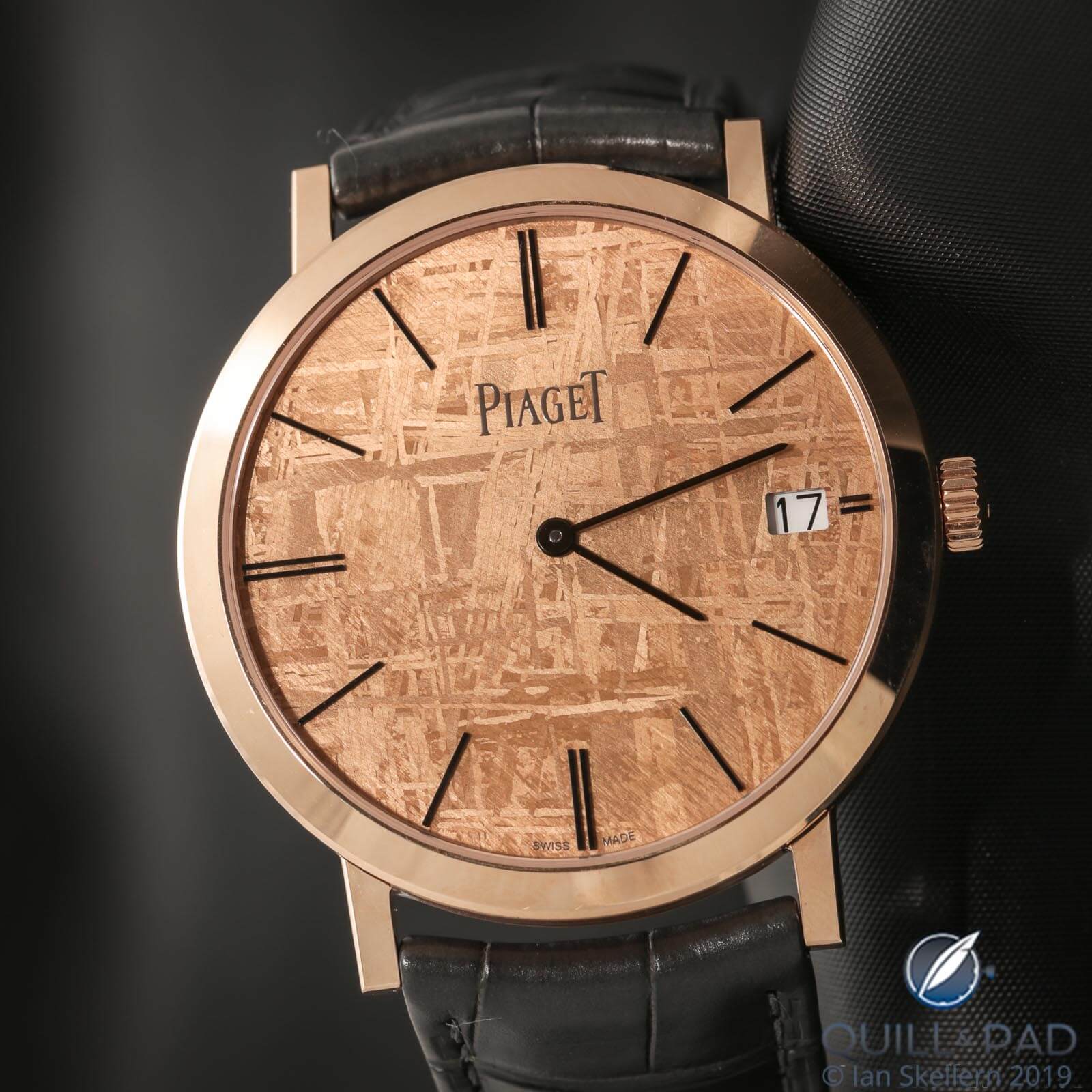
Piaget Altiplano Meteorite
Another element where Piaget has great history is stone dials. Especially in the 1950s through the 1970s, the brand had an extensive range of watches featuring dials made of lapis lazuli, malachite, coral, and many others, sometimes even combining multiple types to create a marquetry dial.
Creating a stone dial is already quite a challenge; making a stone dial for an ultra-slim watch is even more difficult as the dial also needs to be as thin as possible – and thin stone is extremely fragile. For some of its most recent additions to the Altiplano collection, Piaget turned to the heavens, using meteorite for the new dials.
Meteorite: from dull to exciting
Natural meteorite, like natural gemstones, does not look good, and neither is much of it suitable for use as watch dials.
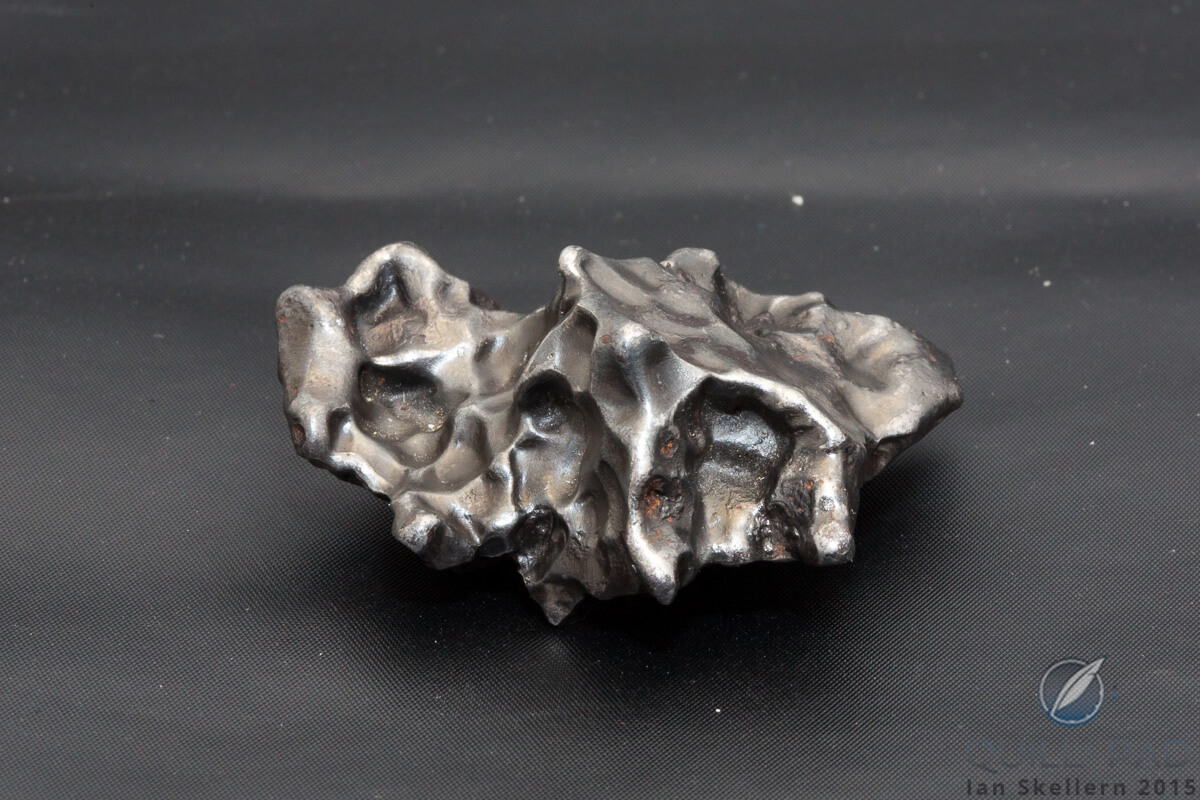
A fragment of the Sikhote-Alin meteorite
The distinct pattern that meteorite-dialed watches are so well known and appreciated for can only be found in iron-nickel meteorites. They have to be treated with nitric acid to highlight and bring out the geometric texture, which is unique in each dial.
Following this, the dial is treated once more to prevent oxidation of the metals it is composed of. On some of the models, Piaget also opted to color the dial – blue for the tourbillon model and gold for one of the time-only models – with the other left its natural grey color.
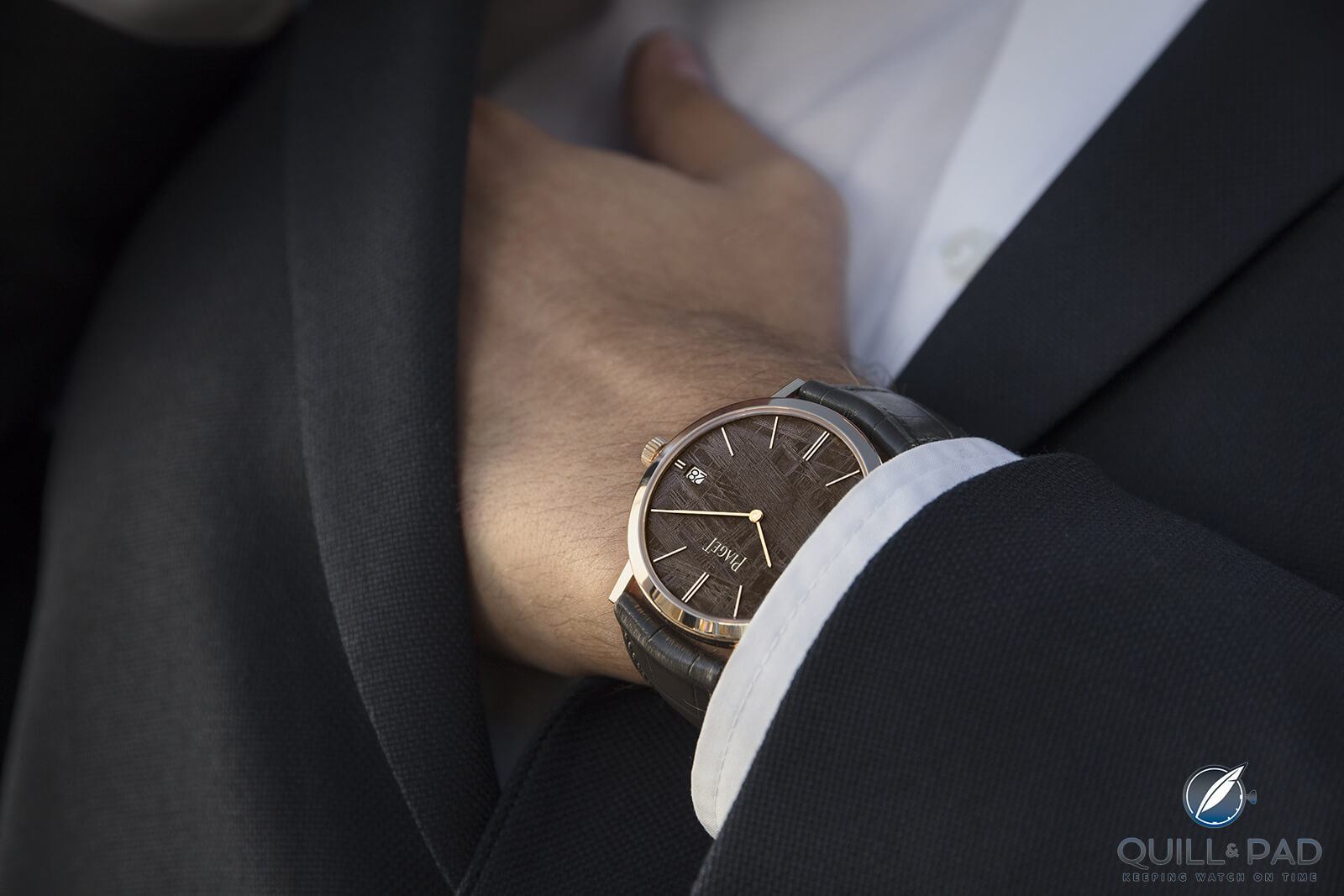
Piaget Altiplano Meteorite on the wrist
While the colors look stunning, especially on the tourbillon model where the blue gets a velvety character, I still doubt whether it needs it. Call me a purist, but some things need to be enjoyed pure, like an excellent single-malt whisky.
It is also worth mentioning that both of the time-only models measure 40 mm in diameter, while the tourbillon is one millimeter larger. As all of the Altiplanos have quite thin bezels the dials are wider, so the size of the slice of meteorite on the dial is larger. Which makes them even rarer and more valuable.
Off center, on point
I have always been a fan of Piaget’s tourbillon version of the Altiplano because it places the flying tourbillon on par with the time display in an asymmetrical manner. This design offers the additional advantage that there is still plenty of dial left to display the unique patterns of the meteorite in all of its glory.
This dial setup also reminds me of Piaget’s glory years in the 1950s and 1960s, when many daring designs graced the wrists of the world of the rich and famous.
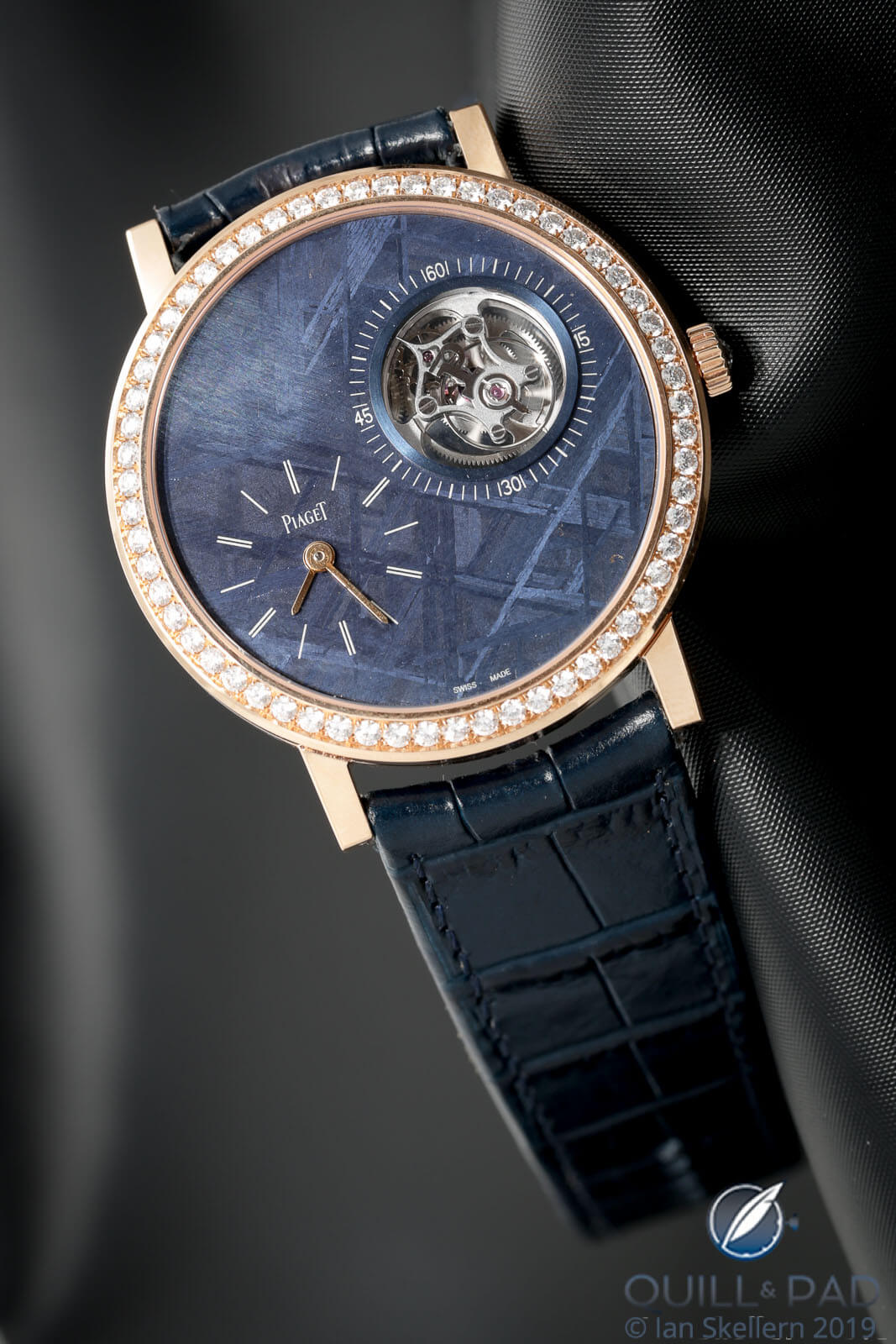
Piaget Altiplano Flying Tourbillon with blue meteorite dial
To amplify the exquisite nature of this watch, Piaget set some of the bezels with brilliant-cut diamonds. While I am a big fan of diamonds, I feel that they turn this timepiece from something that Lord Brett Sinclair would have worn into a watch more suitable for Austin Powers.
The diamond-set bezel is simply too much and takes away from the dial, which rightfully deserves center stage.
Is a date really necessary on a timeless creation?
On the time-only models, Piaget felt the need to include a date window. To some extent, this makes sense, as there are quite a few people who think that a date is mandatory for every watch they buy.
However, when you put so much effort into creating such a stunning watch with a meteorite dial, only to risk breakage by cutting another hole in it, it does make you wonder whether they wouldn’t have been better off forgoing this.
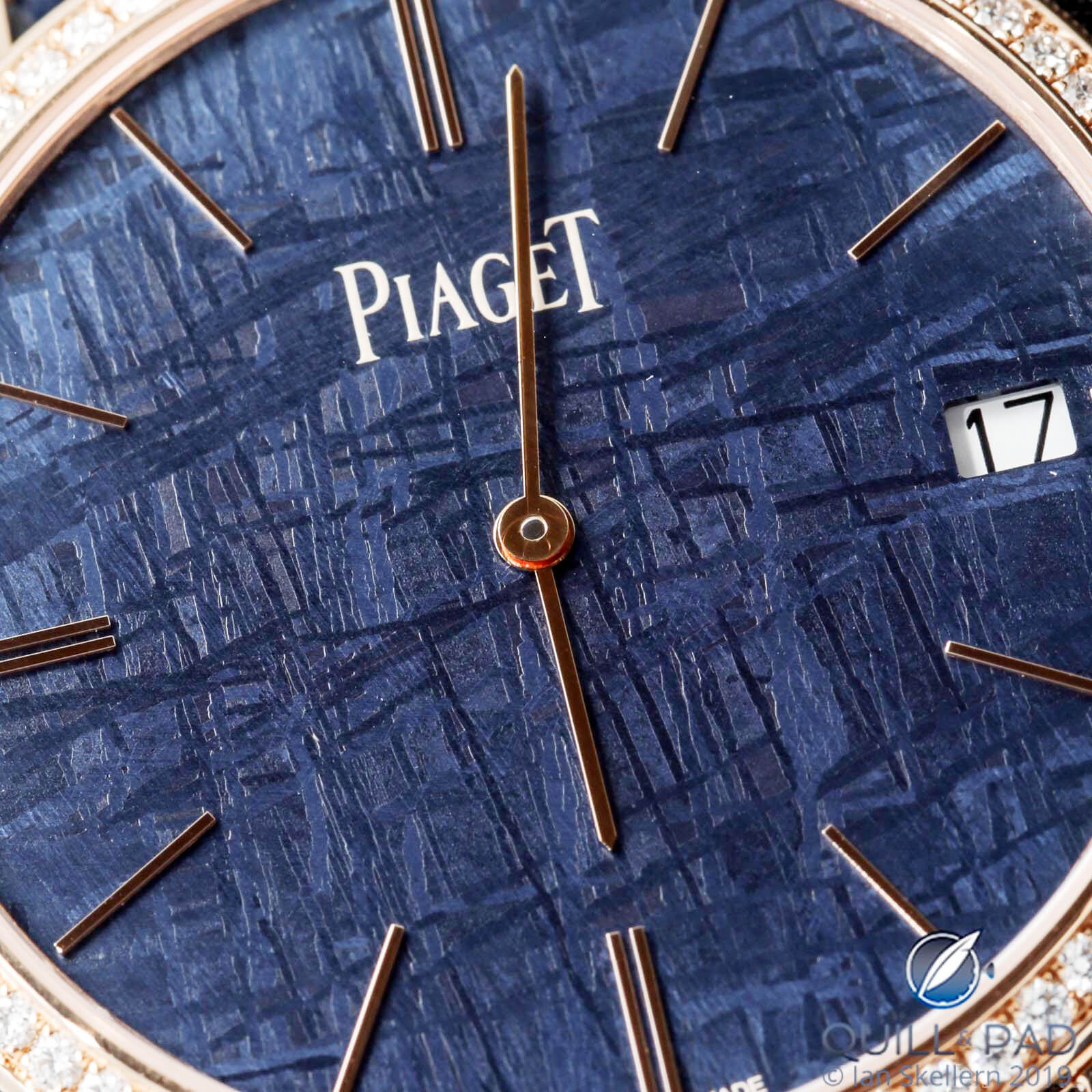
The velvety blue dial of a Piaget Altiplano Meteorite
What bothers me most, though, is that Piaget opted for a white date wheel, which offers too stark a contrast with the dial colors of all of the time-only models. The window also seems to be very tight, with barely enough room to display the numerals in full.
As there is no outline of the date window in gold, as Piaget has used in the past on the 12P collection, the watch has an unfinished look. This is such a waste; while I feel that Piaget crossed every T and dotted every I when making these Altiplanos, the way that the designers incorporated the date takes away quite a bit of the magic.
For me, the date here is a deal breaker, and I would either opt for an Altiplano without a meteorite dial or go for the far more expensive tourbillon model. Those not too bothered by the date will find in the time-only an exquisite watch. It is, after all, a Piaget.
Then there are the movements
Part of Piaget’s appeal lies in the movements. Both of the time-only models are powered by Caliber 1203P, the spiritual successor of the legendary 12P.
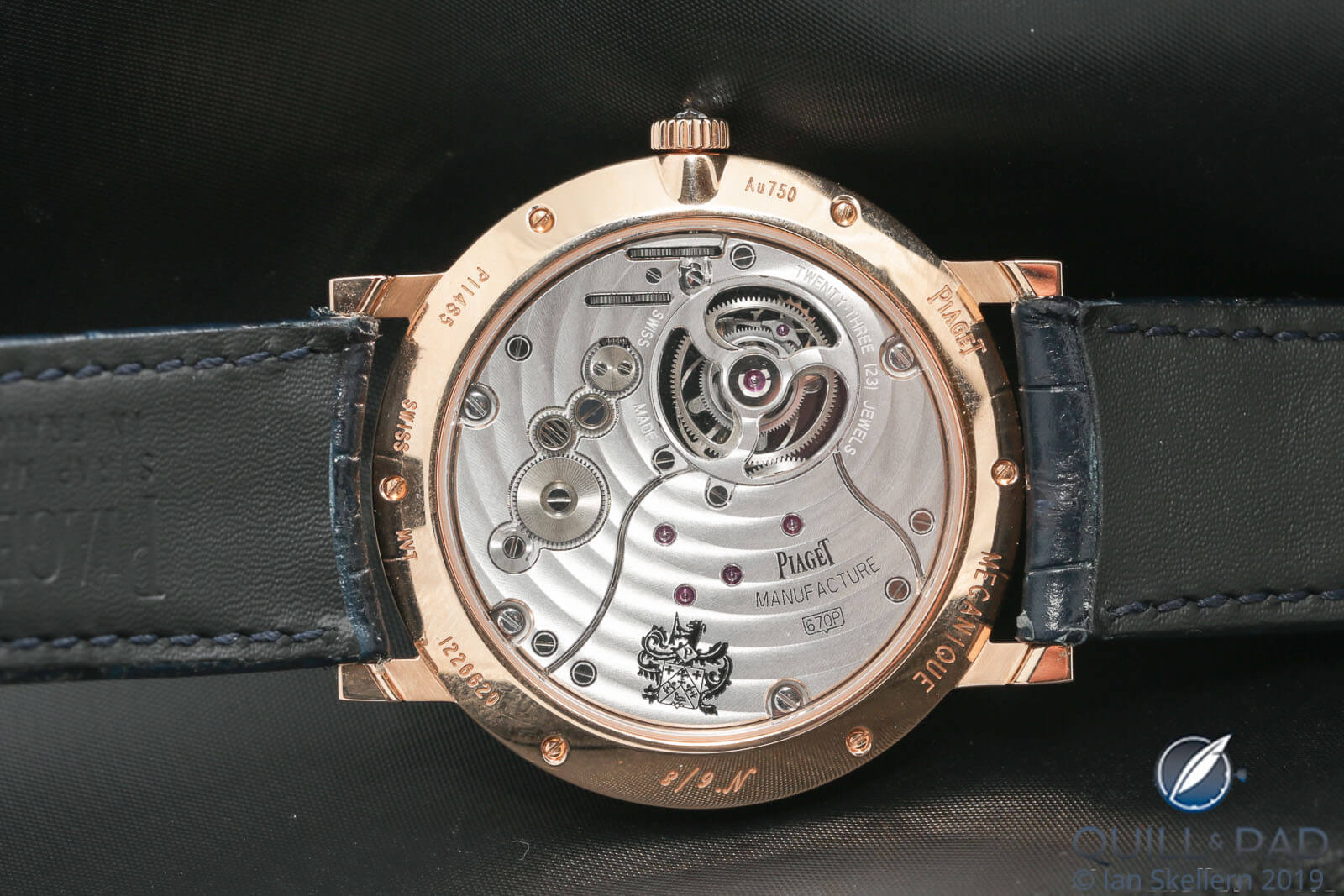
View through the display back of the Piaget Meteorite Altiplano Flying Tourbillon
Caliber 1203P is fitted with a micro rotor and, just like its ancestor, it is ultra-thin, coming in at a height of only 3 mm. The tourbillon movement is slightly thicker, yet at 4.6 mm still quite slender for housing such a complication.
These movements are part of the appeal as they not only keep the overall height down but also increase the complexity of these watches. This is something that only true connoisseurs will know and therefore appreciate.
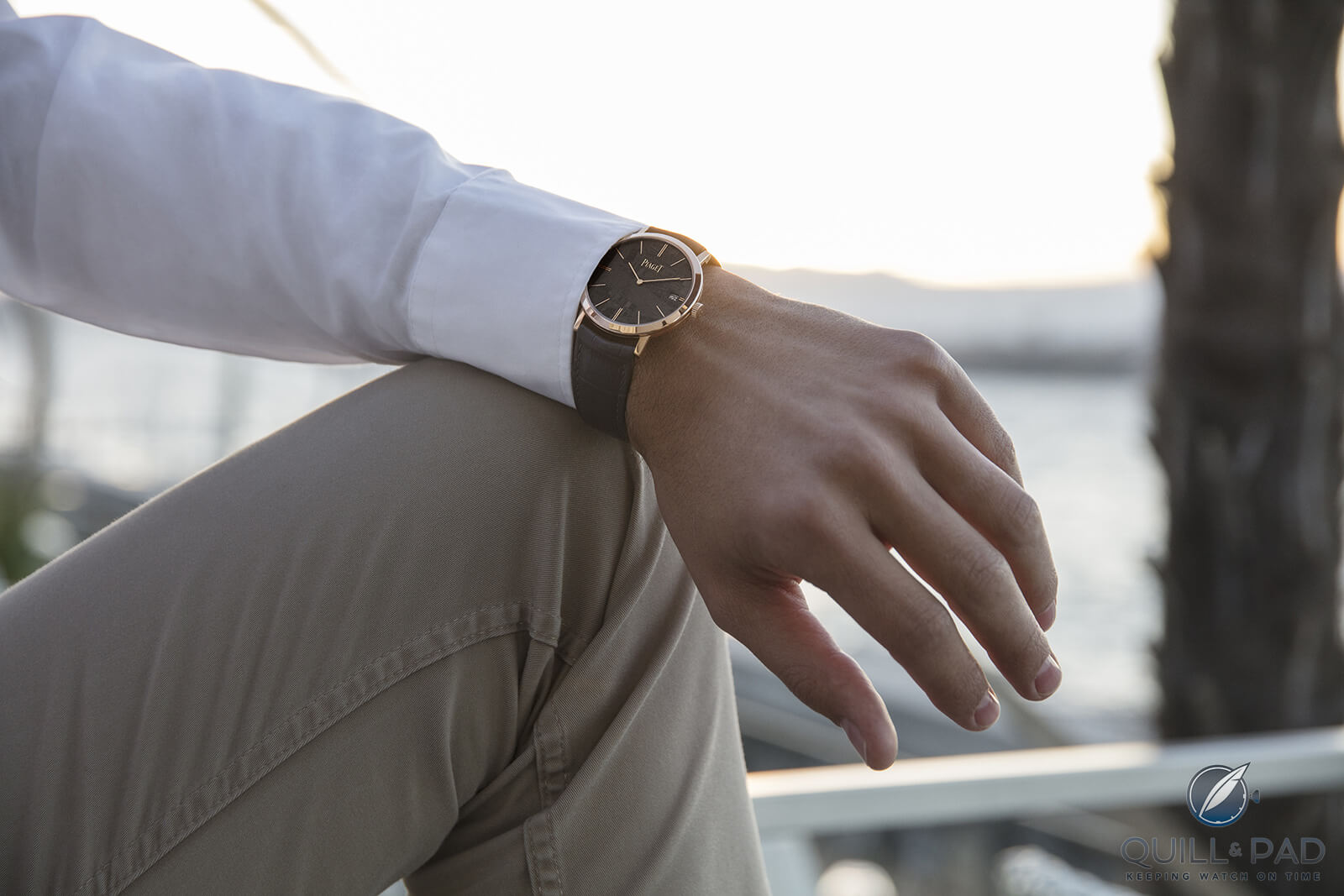
Piaget Altiplano Meteorite on the wrist
While my love for the brand makes me perhaps a bit harsher with my criticism, it does offer a unique proposition in the world of watches as meteorite-dialed timepieces are rare – and ultra-slim ones even rarer.
For more information, please visit: en.piaget.com/watches/rose-gold-diamond-ultra-thin-tourbillon-watch, en.piaget.com/watches/rose-gold-ultra-thin-date-watch, and/or en.piaget.com/watches/rose-gold-ultra-thin-date-watch.
Quick Facts Piaget Altiplano Flying Tourbillon Ref. GOA44053
Case: 41 x 7.05 mm, pink gold, bezel set with 60 diamonds (1.44 ct) and one brilliant-cut diamond on the crown (0.09 ct)
Dial: blue-colored meteorite
Movement: manual wind Caliber 670P with one-minute flying tourbillon, power reserve 48 hours, 3 Hz/21,600 vph frequency,
Functions: hours, minutes, seconds (on tourbillon carriage)
Limitation: 28 pieces
Price: CHF 110,000
Quick Facts Piaget Altiplano Time-only GOA44051
Case: 40 x 6.36 mm, pink gold
Dial: meteorite
Movement: automatic Caliber 1203P, power reserve 44 hours, 3 Hz/21,600 vph frequency
Functions: hours, minutes; date
Limitation: 300 pieces
Price: €28,100 / $24,600 / £24,600
Quick Facts Piaget Altiplano Time-only GOA44051
Case: 40 x 6.36 mm, pink gold
Dial: gold-colored meteorite
Movement: automatic Caliber 1203P, power reserve 44 hours, 3 Hz/21,600 vph frequency
Functions: hours, minutes; date
Limitation: 50 pieces
Price: €29,300 / £25,700
You may also enjoy:
5 Out-Of-This-World Meteorite Dials From Jaquet Droz, Romain Gauthier, Rolex, Piaget, And Hermès
Jaeger-LeCoultre Master Calendar Meteorite: It’s Out Of This World!
60 Years Of Piaget Altiplano: Sophisticated Style Versus Fugitive Fashion
Leave a Reply
Want to join the discussion?Feel free to contribute!





















































Some lovely watches there……. ABSOLUTELY RUINED by a date complication! Sigh.
I have lost count of the number of watches which I have rejected because of this most commonplace of design disasters. Imagine buying a black Saville Row suit which had a square of white material sewn into the back of the jacket. And not having an option about it.